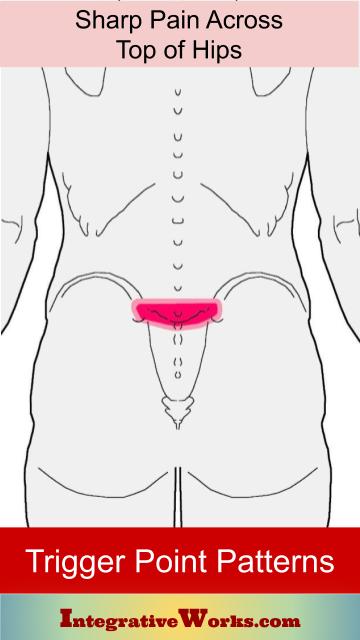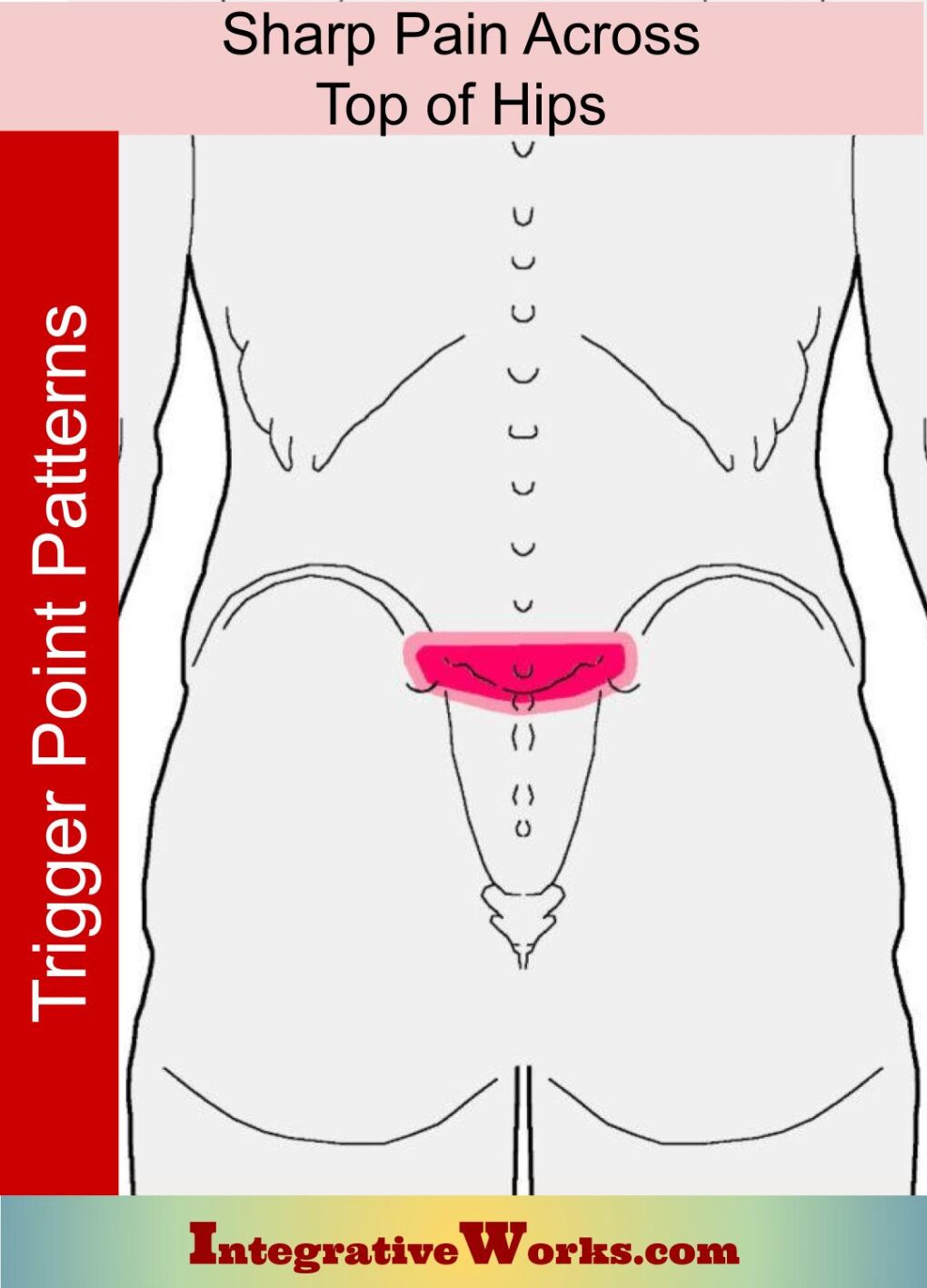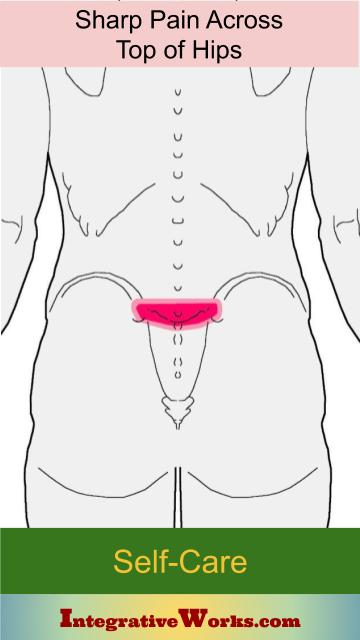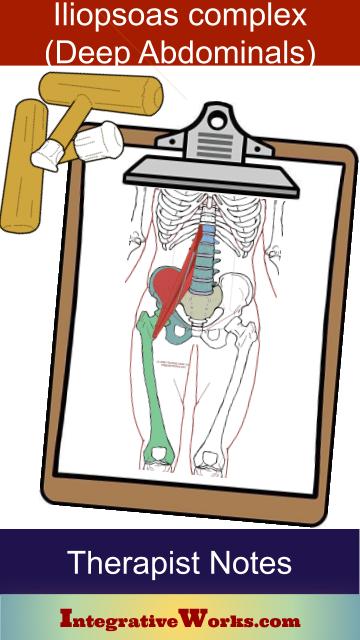Table of Contents
- How People Describe This Pain Pattern
- How You Activate and Intensify This Pain Pattern
- Self-Care – Getting Relief on Your Own
- Musculoskeletal Anatomy Behind Your Pain
- Therapy Notes for Massage and Bodywork
Want to skip ahead?
Here’s a link to my post about
getting relief on your own.
How People Describe This Pain Pattern
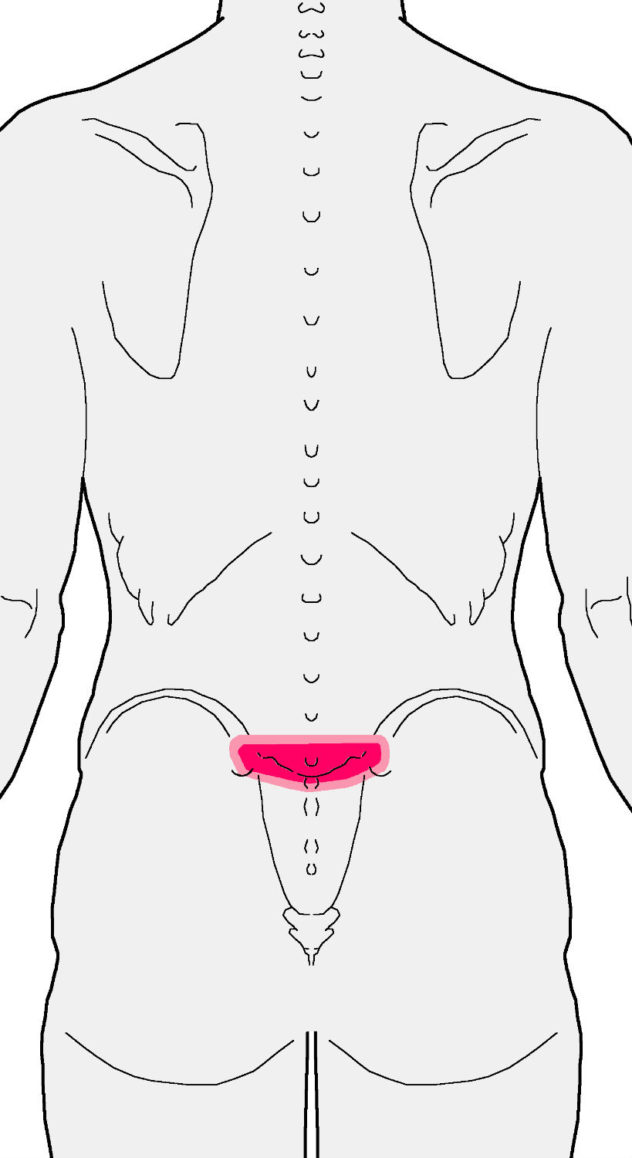
Tough Getting Up
These patients complain of sharp pain across the low back when getting out of bed, out of a car, or standing up from a chair. They may also be slow to rise from a seated position.
Stooped Walk
People with this condition also tend to walk and stand with their hips thrust back and their shoulders forward to accommodate the tight psoas major muscles. This teetering posture usually leads to other musculoskeletal problems that create sharp pain, with an unstable low back, especially in the morning.
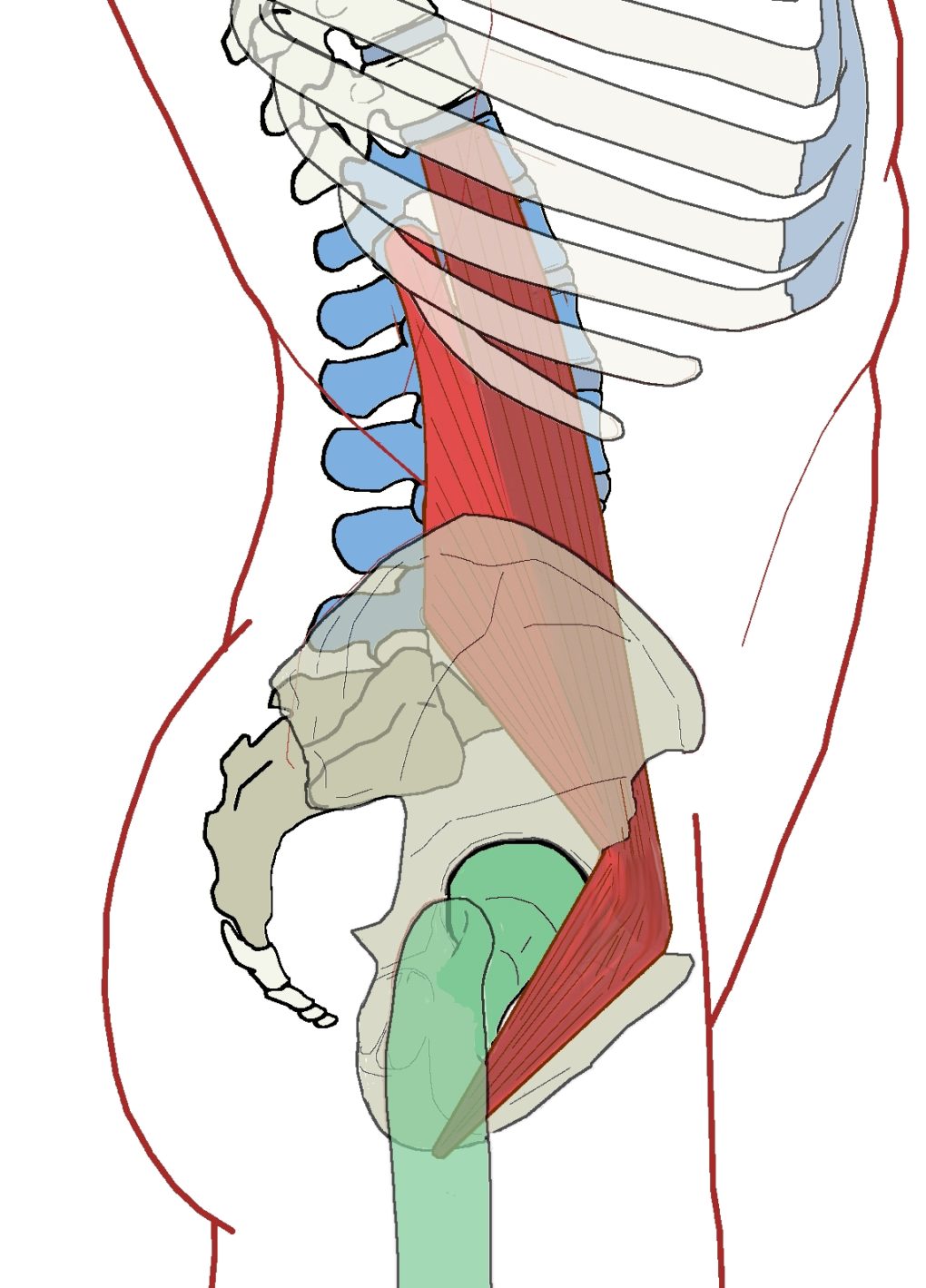
J-curve in low Back
The most common posture involves a sharp curve at the bottom of their spine. This is caused by the pull of psoas major on the lower vertebrae. This illustration shows how psoas major is perfectly positioned to pull those vertebrae forward. You can see the J-curve in the low back of the example below.
Flat Low Back
People with a flat low back also get this pattern but usually have problems with compression in other lumbar discs as well. In those cases, they often have a larger gut, and the psoas is pulling forward and down to keep the low back from curving backward. As discussed below, it also occurs in exercise enthusiasts that have short, strong abdominals.
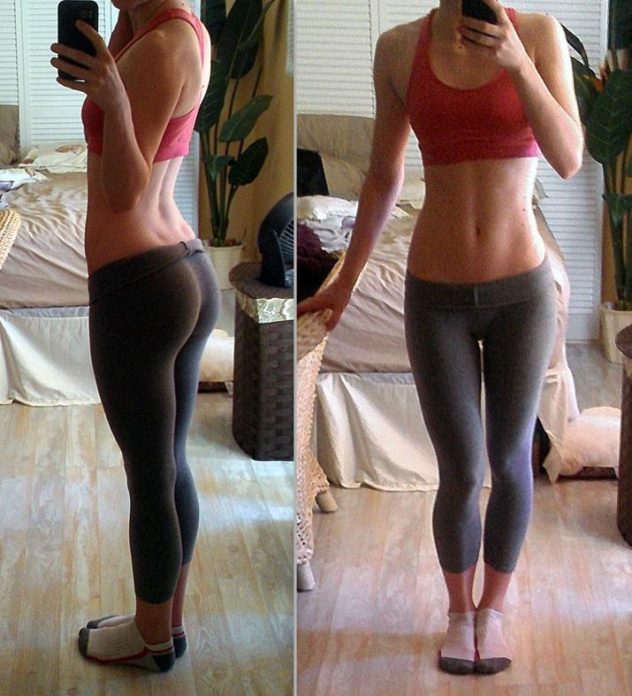
Fit… But Hurts
Here’s a classic example. She’s good at keeping her shoulders back. They are over her hips but notice how her spine is flat in her upper back with winged shoulder blades. Her spine curves sharply at the base of her spine. This is indicative of a tight psoas that is pulling the spine forward and down to counter shortened abdominals.
Sharp pain across the top of the hips indicates that the psoas major is tight on both sides. In her case, you can tell from the flexed hip and knee, hers is even tighter on the right. She may be having this pain pattern instead.
No One is Symmetrical
By the way, people are built asymmetrically. The left hip is bigger and more anteriorly rotated in almost all of us. If you watch, you’ll see that people are much more likely to lock the left knee and flex the right hip when standing, as she does.
How You Activate and Intensify This Pain Pattern

Hips Flexed Too Much
Especially in older, less fit bodies, this is a problem of chronic posture problems. Mostly, it comes from sitting and leaning forward for long periods. This becomes a greater problem for people over 40. This is because the opposing low back muscles become weaker as the sacroiliac joint fuses.
Crunch Time (NOT)
As well, I see this in exercise enthusiasts who do abdominal work the wrong way. Instead of crunching the abdomen, they flex the hips. This muscle is the great hip flexor. So, tightening it makes this condition worse. Not good.
Even more, tightening the front of the abdomen, flattens the low back. In response, this muscle tightens to restore lumbar curve. It’s a vicious cycle. Balanced core work is important for the tension of this muscle.
Well, Poop
People with digestive problems have a greater frequency of this back pain. Unfortunately for them, the nerves to the digestive tract run through this muscle. So, this muscle tends to be tighter in people with digestive disorders. Many of my clients have had relief from this problem when they improve their digestion.
The Musculoskeletal Anatomy Behind Your Pain
Musculoskeletal Anatomy
Psoas Major
This muscle is seldom illustrated to show both sections, which attach to different vertebrae and wedge the iliohypogastric complex between them. Learn more in this post about psoas major.
Getting Relief on Your Own
Clinically Proven
Self-Care Strategies
This post has strategies for getting relief on your own. Explore how to change your activities, stretch, ice, and more to relieve the pain associated with this trigger point.
Therapy Notes for Massage and Bodywork
Better Bodywork
Through Shared Expertise
This post has techniques, tips, treatment routines, and anatomy illustrations to improve the bodyworker’s approach.
Support Integrative Works to
stay independent
and produce great content.
You can subscribe to our community on Patreon. You will get links to free content and access to exclusive content not seen on this site. In addition, we will be posting anatomy illustrations, treatment notes, and sections from our manuals not found on this site. Thank you so much for being so supportive.
Cranio Cradle Cup
This mug has classic, colorful illustrations of the craniosacral system and vault hold #3. It makes a great gift and conversation piece.
Tony Preston has a practice in Atlanta, Georgia, where he sees clients. He has written materials and instructed classes since the mid-90s. This includes anatomy, trigger points, cranial, and neuromuscular.
Question? Comment? Typo?
integrativeworks@gmail.com
Interested in a session with Tony?
Call 404-226-1363
Follow us on Instagram

*This site is undergoing significant changes. We are reformatting and expanding the posts to make them easier to read. The result will also be more accessible and include more patterns with better self-care. Meanwhile, there may be formatting, content presentation, and readability inconsistencies. Until we get older posts updated, please excuse our mess.
